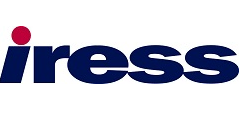Middle and back-office processes need to be standardised across business lines in order to achieve the efficiency needed to drive asset growth. Clear management vision is essential within any large-scale change management process in order to meet growth targets while people considerations must not be overlooked.
Headlines:
- More often than not, it is not about the technology implementation but more about change management and front-office changes.
- Legacy systems can be an inhibitor to major change initiatives, particularly in cases where there are multiple platforms run by several suppliers.
- It is almost impossible to keep everyone happy and that there will inevitably be tensions between different stakeholders in a change management project.
- There is no clear starting point for a change management process but there comes a time where you have to launch a plan and be prepared to flex.
- Front-office staff should feel listened to even if feedback is not incorporated within the wider process.
Key issues and challenges:
- The session opened with analysis of a wealth manager that had recently undergone a large re-platforming exercise as part of their growth strategy.
- The main objective of the re-platforming initiative was to ensure a common and consistent client proposition across all businesses and channels. As such, a single platform was devised to help build more efficiency into the business model and ultimately allow the firm to achieve both scalability and growth.
- In order to meet its business growth objectives, the firm in question had sourced an external supplier to help migrate separate business lines onto one single platform. The re-platforming initiative has been running for two to three years and encompasses around 10 different business lines that were acquired through inorganic growth. One key ingredient in the success of re-platforming is the need to have standardised middle and back-office processes that are agnostic of the multiple channels through which services are delivered.
- Several key considerations were discussed in the wider context of achieving economies of scale and growth within a re-platforming exercise. Legacy systems were seen as an inhibitor to major change initiatives, particularly in cases where there are multiple platforms run by different suppliers. However, more often than not, delegates agreed that considerations around the people involved rather than the technology posed the main barriers to change.
- Change management is particularly relevant for front-office staff who can be adverse to change and hold considerable power in the form of their client books. One delegate likened the change management process to: “performing open heart surgery while trying to run a marathon”.
- However, there are clear strategies and learnings from previous change management processes that can be implemented in future projects. Setting clear manageable phases within a large project is essential to monitoring progress and establishing milestones for success. Furthermore, a clarity of management purpose is needed to drive direction and keep the project on track amid many challenges within the business.
- One delegate noted that this is also extremely important from an external supplier’s perspective given the ongoing partnership that needs to be built over a long-term period.
- Delegates discussed where a change management process should start and end given the overwhelming number of considerations. All delegates agreed that it is almost impossible to keep everyone happy and that there will inevitably be tensions between different stakeholders.
- Again, the importance of a clear vision from management was highlighted and the fact that you cannot plan for every eventuality within a project plan. Delegates recommended having a single point across all parties while others emphasised that a wider strategic committee overseeing everything can make the process easier.
- Access to external suppliers who can provide aggregation services is also more readily available to wealth managers than ever before.
- The issue of running legacy technology systems in parallel with new updated processes was examined in detail. There is no definitive right answer about when to ‘switch off’ legacy systems and only run processes on new technology as each case should be evaluated on an ad-hoc basis.
- Management has to make the ultimate decision on when to enforce these decisions yet they need to be careful not to use technology as a blunt instrument for change.
- Front-office staff and investment managers need to feel listened to throughout a change management process even if they do not have the final say on decisions.
- One delegate referenced the positive impact of running feedback sessions and that even a small aesthetic change to front-end systems can make a massive difference to front-office engagement.
- Finally, the topic of growth was discussed in the context of how to accumulate assets at a fast pace while also quickly drawing out efficiencies.
- Management should be able to flex plans to find the right level of support when efficiencies cannot readily be harnessed but remain firm in their overall vision. One delegate speaking from experience likened the similarities of change management to house renovation, noting that not all inefficiencies are immediately visible: “It’s what you find in the plaster once you pull down a wall when renovating a house.”
Conclusions and solutions:
- One key element for re-platforming success is having standardised middle and back-office processes that can support delivery through multiple channels.
- Clarity of management purpose is needed to oversee large change management projects while a single point of contact across all stakeholders is beneficial.
- Scalability and growth can be unlocked once efficiencies are drawn out in the processes that support delivery for all the business lines.
Expert: Simon New, IRESS



